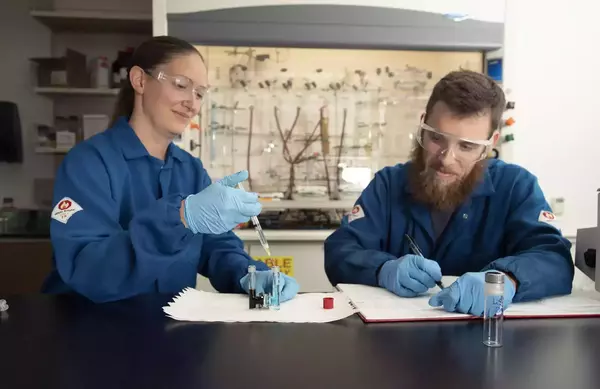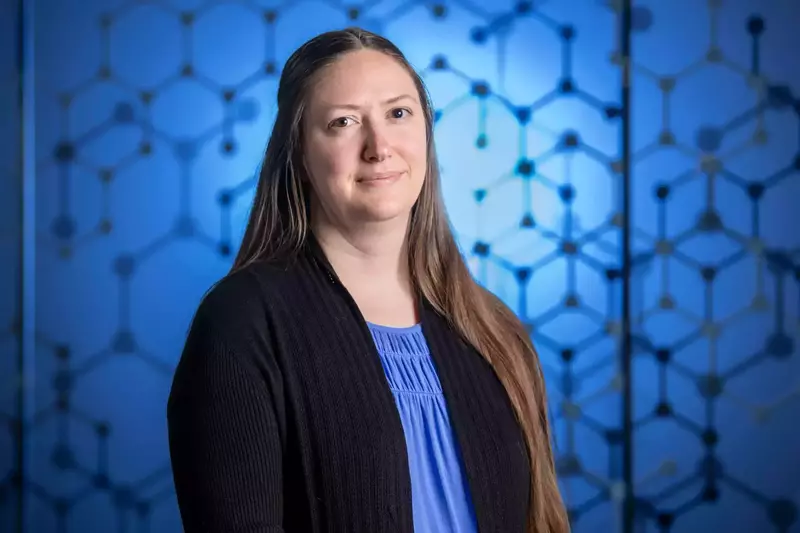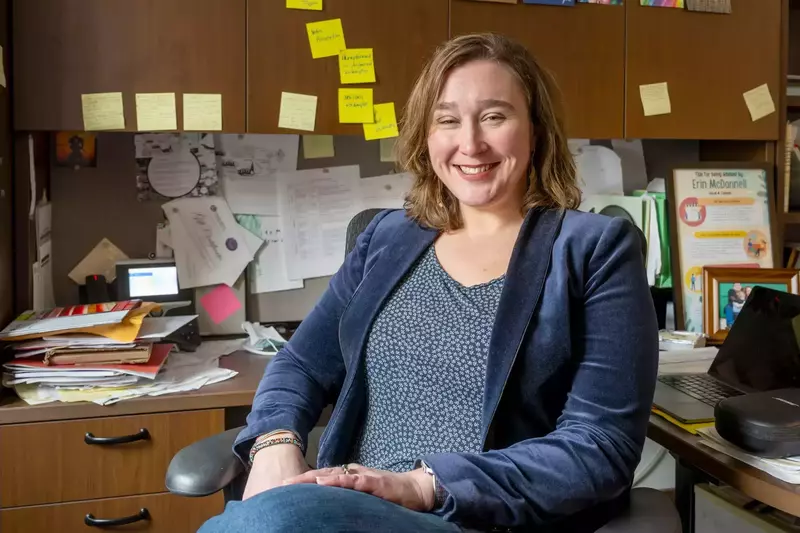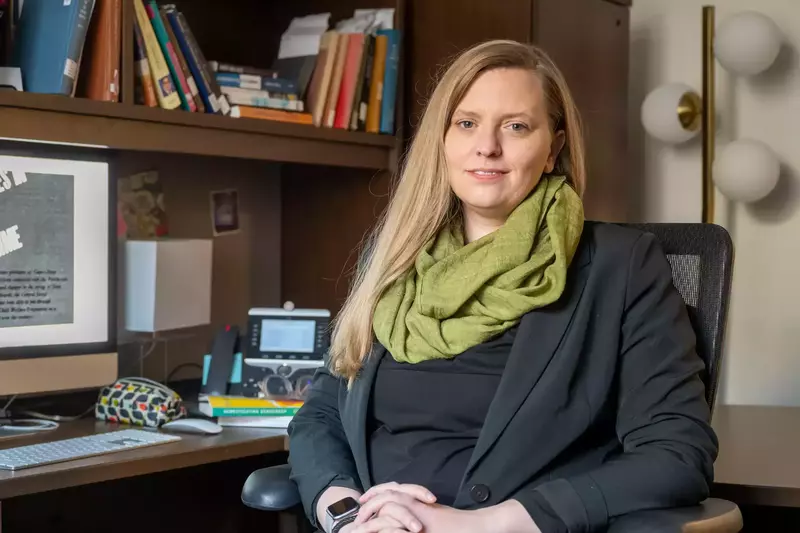On the first day of class each semester, Jennifer Schaefer tells her students that she chose chemical engineering because our everyday lives are shaped by the existence of plastics, and she wanted a field with tentacles stretching everywhere—from food and pharmaceuticals to consumer products and energy.
Her new course, co-taught with a colleague and aimed at non-engineering students, is called The Story of Stuff. It traces the life cycle of everyday things from the raw materials used in production to how they are made to what happens after we are done with them. The focus is on impact.
“It’s an introduction to the intersection of materials, energy, and sustainability, which are the topics that I’m personally most interested in,” Schaefer said. “Our goals for this course include making a lasting impact on how the students view our built environment and interpret claims about sustainability.”
Schaefer, the Sheehan Family Collegiate Professor of Chemical and Biomolecular Engineering, studies ion transport and electrochemical processes with a focus on improving batteries. Her research group of graduate and undergraduate students develops new materials and tests how these polymers function to make batteries better.
“I like working one-on-one with students and small groups of students and offering them the experience that I got as a student, because research is not for everybody, but you don’t know until you try something if it’s for you.”
“We target energy density and safety—making the device smaller and lighter but still holding the same amount of energy,” she said.
Rechargeable lithium-ion batteries contain cobalt, a less abundant element that comes mostly from a single country in Africa. The limited supply of cobalt holds back the speed of conversion to electric vehicles. Her research also looks at batteries made with sustainable materials, such as sulfur, that don’t have these supply restrictions.
“If everybody’s going to drive an electric vehicle and we’re going to be able to have all solar farms and be able to store all the electric power, cobalt could be a limitation,” Schaefer said. “Sulfur is very abundant and it’s a very low-cost element. And it also could give you a device that is lighter.”
Schaefer grew up in rural, upstate New York, and she always liked math and science. Her father worked in a bluestone quarry and her mother was a paralegal. She remembered wanting to be a marine biologist because that was a popular goal then. But in high school, her physics teacher was a retired materials engineer from IBM, expanding her awareness that those jobs existed.
“I eventually decided on chemical engineering because engineers use math to do practical things,” she said. “And chemical engineers get employed in a really wide variety of sectors.”
Schaefer chose Widener University in southeast Pennsylvania, near Philadelphia, because it offered a full scholarship and good environment. She returned to New York in 2008 for her doctoral degree at Cornell University, where she chose to pursue academia.
She had two children by the time she began teaching in the evenings at a community college near Cornell. She also began interviews for faculty positions and postdoctoral fellowships, and juggling those responsibilities taught her to be very organized. She took a research position at the National Institute of Standards and Technology, deferring her offer at Notre Dame for 16 months.

“My department was really growing,” she said of choosing Notre Dame, where she started in 2015. “There was a provost hiring initiative adding eight faculty positions in chemical and biomolecular engineering, because the research we do aligns with priority areas such as sustainability and human health.”
Schaefer said she also liked the open research environment planned in McCourtney Hall and the excellent facilities, because materials research requires a lot of instrumentation. A glove box in her lab, for instance, allows researchers to work with lithium metal—which reacts with nitrogen, oxygen, and water—in an interior environment filled with argon.
While focused on batteries, the core of her research is understanding how ions move through materials that incorporate polymers, which she described as “molecules that are very big and loop around together—that’s what gives plastic its interesting mechanical properties.”
“Lithium-ion batteries have a flammable solvent in them,” she said. “A flammable liquid component is necessary to allow the device to be able to charge and discharge at the rate that we currently like to use. So we try to swap out liquids for plastics as a mechanism for improving safety.”
One of her favorite parts of the job, besides the day-to-day variety, is mentoring students. Her dedication in this area was honored in 2021 with the Catherine F. Pieronek Women in Engineering Impact Award and in 2022 with the James A. Burns, C.S.C., Graduate School Award for outstanding mentorship of graduate students.
“I like working one-on-one with students and small groups of students,” she said, “and offering them the experience that I got as a student, because research is not for everybody, but you don’t know until you try something if it’s for you.”
Schaefer was also the co-principal investigator with colleague William Phillip of a three-year summer program focused on soft materials applied to sustainability and health—or SMASH Engineering. The nine-week program, sponsored by the National Science Foundation, brought 10 undergraduates from colleges without doctoral programs or advanced labs to campus last summer to conduct research in the development of filters for purifying water and air, biomaterials for better diabetes treatments, 3D tissue cultures and hydrogels for drug testing, and safer batteries.
“Bill and I submitted this proposal (to the NSF) three times, but it’s very competitive,” Schaefer said. “We’re targeting students that wouldn’t otherwise have this type of research experience opportunity.”
Phillip said Schaefer’s energy sustainability work with her research team sets the stage for similar opportunities with the SMASH students.
“Within this research, she consistently encourages her research team to question conventional wisdom, leading to innovative findings such as an interesting charge transport behavior in the presence of water,” he said. “Jen extends this same approach and enthusiasm to mentoring the next generation of scientists and engineers participating in the SMASH program.”


